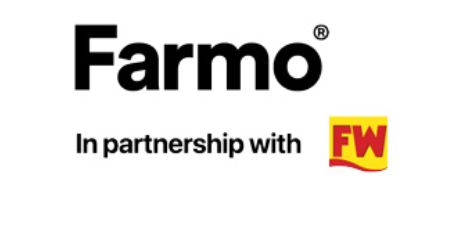Contractor Comment: Rob Chapman enjoys life forager-free
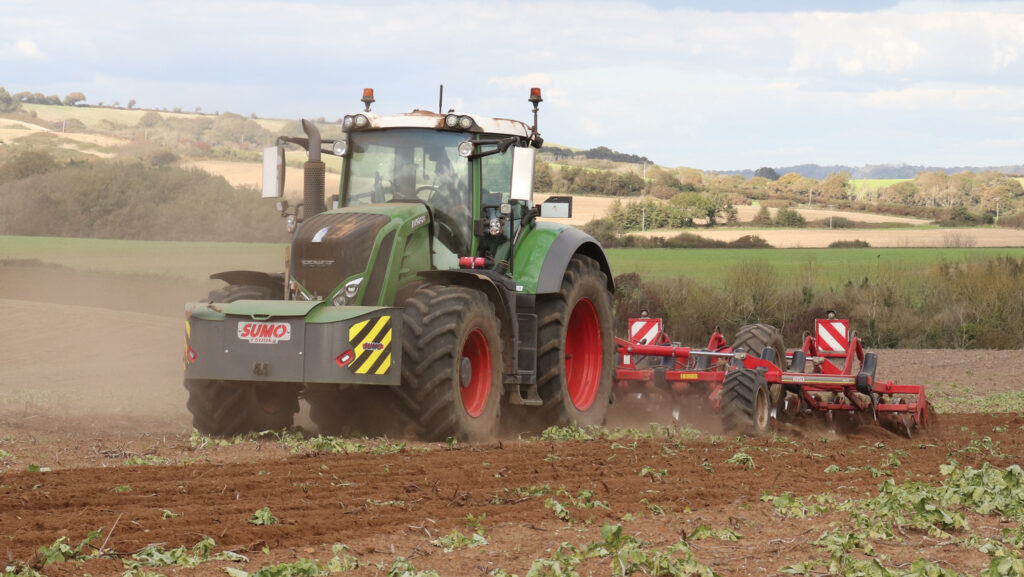 Fendt 828 lugs a 5m Horsch Terrano © Andrew Faulkner
Fendt 828 lugs a 5m Horsch Terrano © Andrew Faulkner Same money, less stress. Isle of Wight contractor Rob Chapman has no regrets about ditching his 1,600ha foraging enterprise back in the spring.
End-of-year profitability is likely to be on a par. And as for the quality of life for him and his four full-time staff?
“There’s literally no comparison,” says Rob.
“Previously, the full-on workload through the season meant we were on a machine seven days a week, regularly through till midnight, whereas this year we’ve rarely gone after 8pm and often taken Sundays off.
“Everyone’s happier for a bit more time at home, and we’re more productive when we are at work.”
See also: Contractor Comment: Sellars steps up after huge combine fire
Business facts
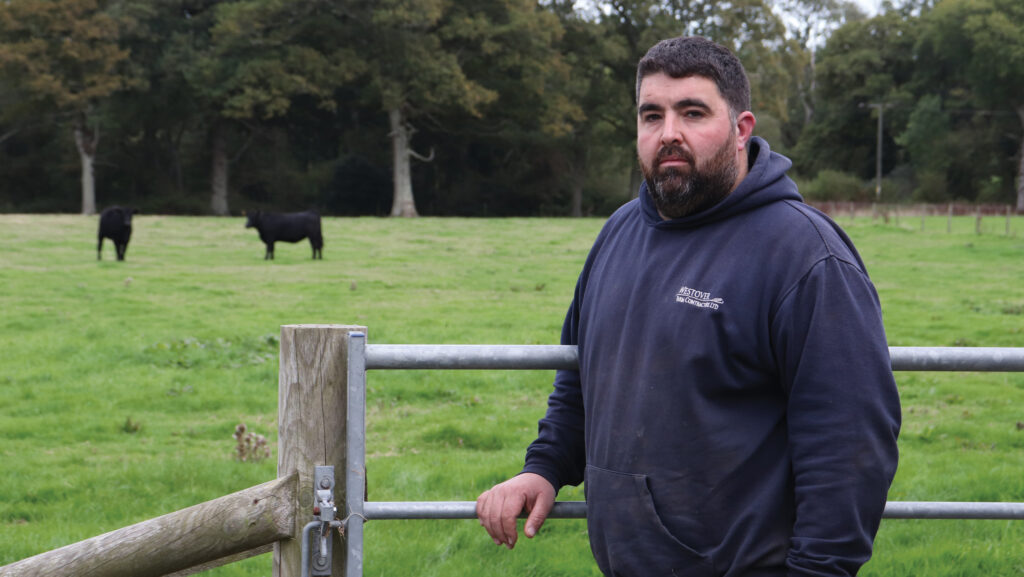
Rob Chapman © Andrew Faulkner
- Westover Farm Contractors, Westover Farm, Calbourne, Isle of Wight
- Main services: Combining (1,200ha), spraying (stubble-to-stubble plus 400ha), drilling (stubble-to-stubble plus 650ha), round/square baling (35,000 bales), ploughing (800ha) and muckspreading
- Other: 700ha contract farming (stubble-to-stubble arable contracts) and 200ha of rented land
- Staff: Four full-time plus another four during the busy season
“Naturally, with the forager gone, I miss sending out invoices for £200,000-plus in the late autumn. But those invoices had to cover similarly huge bills.
“For example, we were shelling out £1,000/day on extra labour alone,” he says.
“In a decent year, we made good money on foraging for the island’s anaerobic digestion plants, but not every year was a good year.
“And the stress of finding work for seven extra guys on the inevitable wet non-silaging days got me down. On balance, getting rid of the forager is just a massive relief.”
Not that the now shrunken Westover team has been slacking in 2025.
In addition to operations on the firm’s 900ha of arable land – stubble-to-stubble contracts and rented – 400ha of maize ground was cultivated and drilled, another 250ha of maize planted, 80ha of potato ground cultivated and 280ha of spring cereals sown.
The 1,200ha of combining was completed on 22 August and, when we visited in late September, Westover had just started drilling its wheat area for harvest 2026.
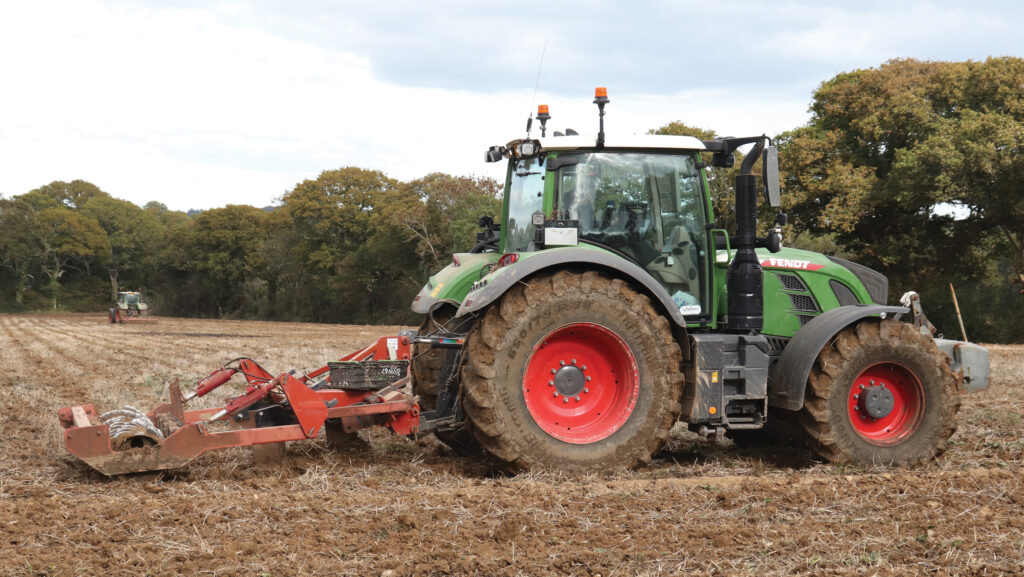
A pair of 2.7m Flatlift subsoilers are responsible for most of Westover’s soil restructuring © Andrew Faulkner
Summer of ’25
Like elsewhere in the UK, the Isle of Wight suffered from a lack of rain through the 2025 growing season.
As a result, Rob’s grass yields were down about 50%, and the milling wheat crop struggled to achieve 5-7.5t/ha.
In a more typical wheat year, the island averages 8-11t/ha.
Bizarrely, spring barleys did relatively well, returning about 7.5t/ha, and, unlike much of the UK, straw yields of all crops were heavy.
“In the wheat, we had lots of tiny heads and poor grain yields, but the straw was thick. We reckon our straw bale numbers were up 20-30%,” says Rob.
The shortage of rain meant a relatively easy harvest, although it did bring different challenges.
Rock-hard ground dictated a lowering of travel speeds to reduce machine bounce – mowing was down from 12kph to sub-10kph – and, even in 2025, the perennial issue of morning sea mists was a problem.
Not much combining is done before midday, and this, along with the island’s small field sizes and tricky narrow-road logistics, explains why Westover currently runs three combines to cut just 1,200ha.
In addition, about 75% of the firm’s grain is offloaded into a 20t chaser bin and then into headland-parked lorries, destined for Isle of Wight Grain.
The aim is to have those lorries waiting for no more than 10-15mins, another reason for running more older combines rather than one new machine.
“When a lorry arrives, the chaser will be full and waiting. It dumps 20t into the lorry straightaway and, typically, one of the combines will also be full and able to top up the remaining 9t.
“Either that, or the chaser goes and picks up another bin-full from each of the combines.”
Combine dilemma
Rob recognises that the business is over-combined, so is aiming to trim the fleet back from the existing three to a still generous two units.
A 2013-plate narrow-body Claas Lexion 760TT was added for harvest 25, joining a 12-plate wide-body 760TT and the in-reserve, smaller Lexion 630.
“My plan is to end up running two narrow-body 760s, but it’s a matter of finding the right machine at the right price. I’m reluctant to shell out more than £150,000 on a combine.
“The older wide-body 760, despite its 3,000 drum hours, went like a dream this year, so the temptation will be to hang onto it for another season – a decision I may well regret.”
Westover paid sub-£100,000 for the narrow-body, 1,000-hour 760TT from Compass Tractors. According to Rob, this saved about £50,000 on not sourcing off Claas’s own used-combine website.
“There was no warranty or pre-sale run-through with Compass, so I’ve clearly taken a risk.
However, bar one dented panel, the machine is in mint condition, has only been fitted with genuine parts and came with two pallets of spares.”
Tractor review
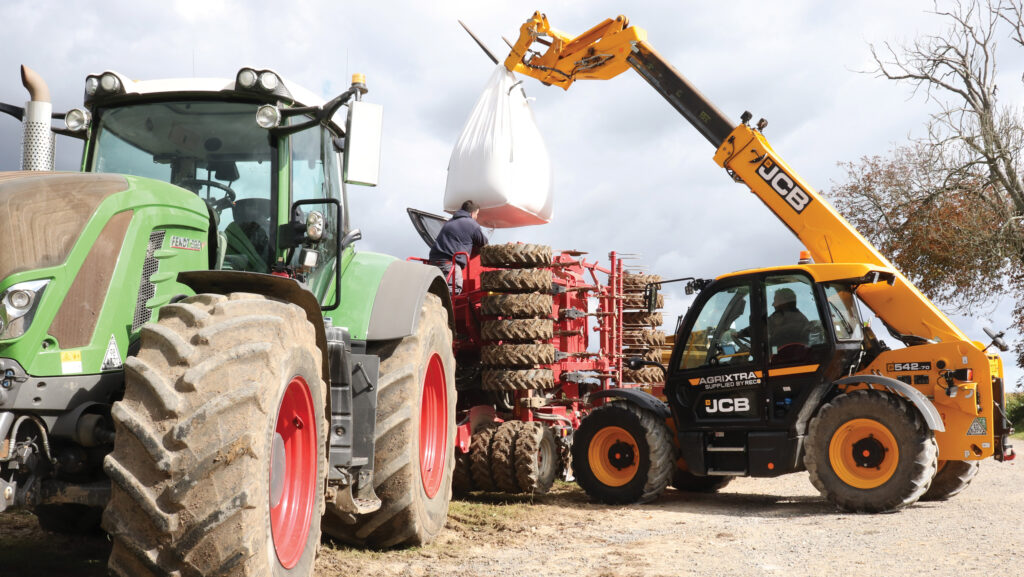
Fendt 939 and 6m Horsch Sprinter 6ST head up the mixed drilling fleet © Andrew Faulkner
The Westover combines may have been problem-free in 2025; the news is not so good on the firm’s tractors.
At the time of our visit, the 8,500-hour Fendt 828, already on its second engine, was down with a suspected front diff failure and facing a further £10,000 repair bill.
To be fair, the other six Fendts are all behaving for now, but most of them are not too far behind the 828 on hours. Which begs the question, what next?
Rob’s looking at four tractor options, all of which include increasing the fleet number back to seven.
He had 11 at the start of the year and reckons he culled one too many when the forager went in the spring.
On tractor replacement, option one is to take out the two oldest Fendts and bring in three new ones, whereas option two is to replace all six with seven fresh.
Option three comprises a wholesale brand swap from Fendt to Deere.
And, last up, Rob has tried and been impressed by a Case IH Puma 240 CVX, so is contemplating a fleet of two- to three-year-old Pumas with 2,000-ish hours to avoid most of the early Case depreciation pain.
“We’re not precious on brand. We like the Fendts and have had fantastic service from Compass over the years, but we think the product has just become too expensive for our job.
“Compass has put together a great deal to change all the existing Fendts, yet, compared with the Deere offer, the new finance package was still going to cost an extra £100,000.”
Rob makes a further interesting comparison on the potential second-hand route.
He reckons he can pick up a 2020-plate, 3,000-hour Case IH Optum 300 for £90,000, as against a similar age Fendt 930 at £170,000.
If he adds another 5,000 hours to both over two to three years, he says the Optum would then be worth about £30,000 and the Fendt £100,000.
“So, the Fendt has cost me £10,000 more in depreciation over 5,000 hours.
“I’m not convinced it would be any more reliable, plus the Case’s parts and servicing would probably be cheaper. And then there’s all the interest on the extra capital invested.”
A decision on tractors – Fendt, Deere or Case IH – is likely to be made when autumn drilling is done.
Other kit
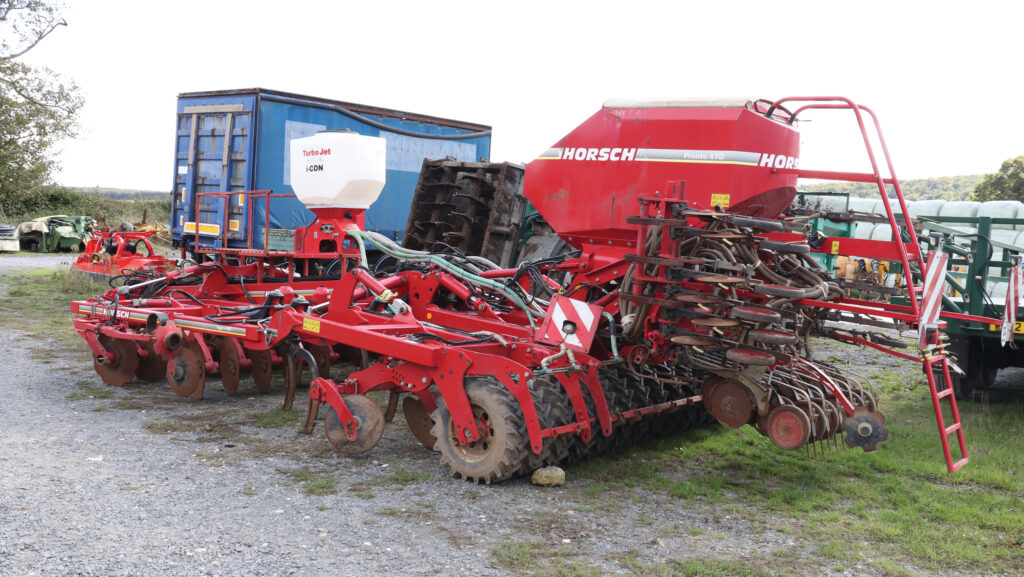
4m Horsch Tiger/Pronto seeder combi © Andrew Faulkner
Despite thinking he was spent up for 2025, Rob is always on the lookout for a bargain. So, almost inevitably, a number of other items have joined the Lexion 760 on this year’s new additions list.
Arguably the most impressive is a 2011-build 4m Horsch Tiger 4 MT disc/leg cultivator, complete with Pronto 4 TD seeder and Stocks Turbo Jet applicator, all picked up for a modest £14,000 at a Cheffins online auction.
Other than missing a few pipes and needing some fresh metal in certain areas – a spend of £2,000, tops – the cultivator is in A1 condition.
“The plan is to either use it to establish cover crops, or remove the seeder/applicator and have it as an extra cultivator. We might even mount the Pronto seeder on a power harrow and run it as another combination unit.
“Worst case, I could spend the extra £2,000 on putting the whole outfit right and then sell it on for a healthy profit.”
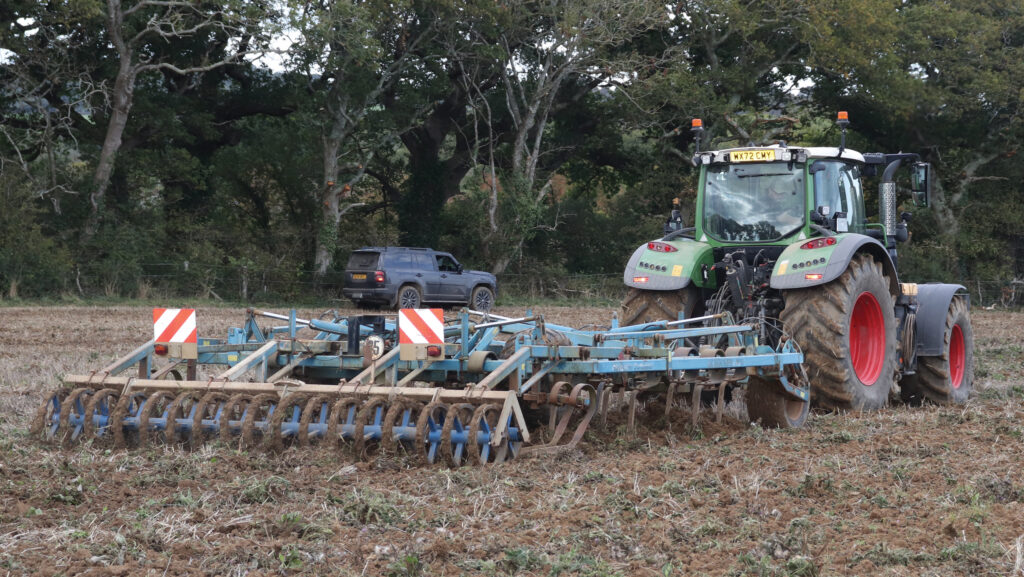
This 21-year-old 4m Kockerling Precision Cultivator came from Hants-based Olivers in 2018 for £5,500 © Andrew Faulkner
Rob likes to have several different cultivator types within his tillage armoury, providing the justification for yet another new arrival – a 5m wide Horsch Terrano 5 FM, which came out of Essex-based dealer Oakfields.
At five years old and costing him £15,500, plus about £500 delivery to the island, Rob says it was still less than half the price of a new machine.
Oakfields pointed out the weld repairs to the frame, but he was happy to accept these, as the job had been done right.
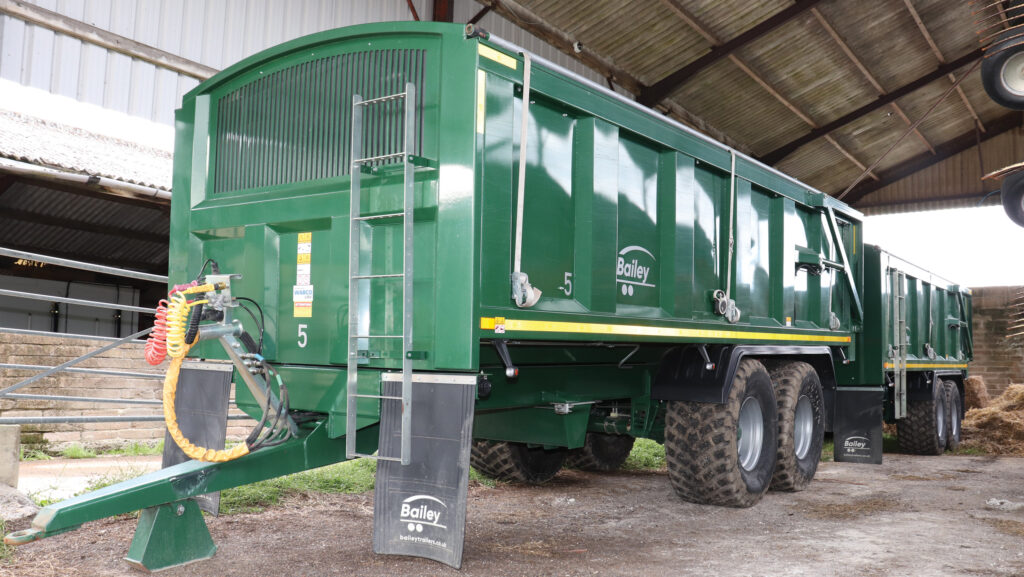
Two of the three new Bailey TB16 trailers to arrive from Somerset dealer Richard Parris earlier this year © Andrew Faulkner
Other additions include three 2024 16t Bailey TB16 grain trailers, on flotation rubber and with rollover sheets, for which he paid £19,000 apiece, a saving of about £6,000 on new.
The aim is to keep these trailers for two or three years, restrict them to grain-only use and sell on for about £18,000.
He also bought a one-year-old 14t Bailey flatbed trailer with hydraulic side rails, which is largely used for carting seed and fertiliser.
Rob spotted this on the Farm Machinery Locator website at the yard of Welsh dealer Gwili Jones. Price paid: £12,000.
Future plans
With the foraging operation gone, Westover Farm Contractors has refocused.
Even in the currently challenging climate, Rob is determined to make the contracting business pay, hence his drive to cut costs through taking a more imaginative approach to tractor replacement and continuing to buy and sell used implements whenever the price is right.
He’s also keen to grow the arable area, but again only when the rental levels and income-earning potential stack up.
Outside of farming, Rob may not be keen on diversification, yet he understands the requirement to add more resilience to the business, especially given the current environment. There are other projects afoot.
Kit list
- Tractors Fendt 939, 828 x2, 724 x2, 722
- Combines Claas Lexion 760TT (10.7m header), Lexion 760TT (9m header) and Lexion 630 (7.6m header)
- Handlers JCB Loadall 542-70 x2, Claas Scorpion 7045
- Sprayer Amazone Pantera 4502 self-propelled (36m, 4,500-litre)
- Drills 6m Amazone front/rear combi, 6m Horsch Sprinter 6ST, 6m Sky EasyDrill, 12-row Horsch Maestro, six-row Gaspardo, 4m Horsch Tiger 4 MT with Pronto 4 TD
- Main other kit Claas Quadrant 2200, 2100 and New Holland BB870 big balers, Krone Comprima CF155XC Plus round baler wrapper, 8.5m Krone triple mower, Samson Flex 16 muckspreaders x2, ploughs x3, KRM M45W fertiliser spreader, rakes/tedders and assorted trailers

